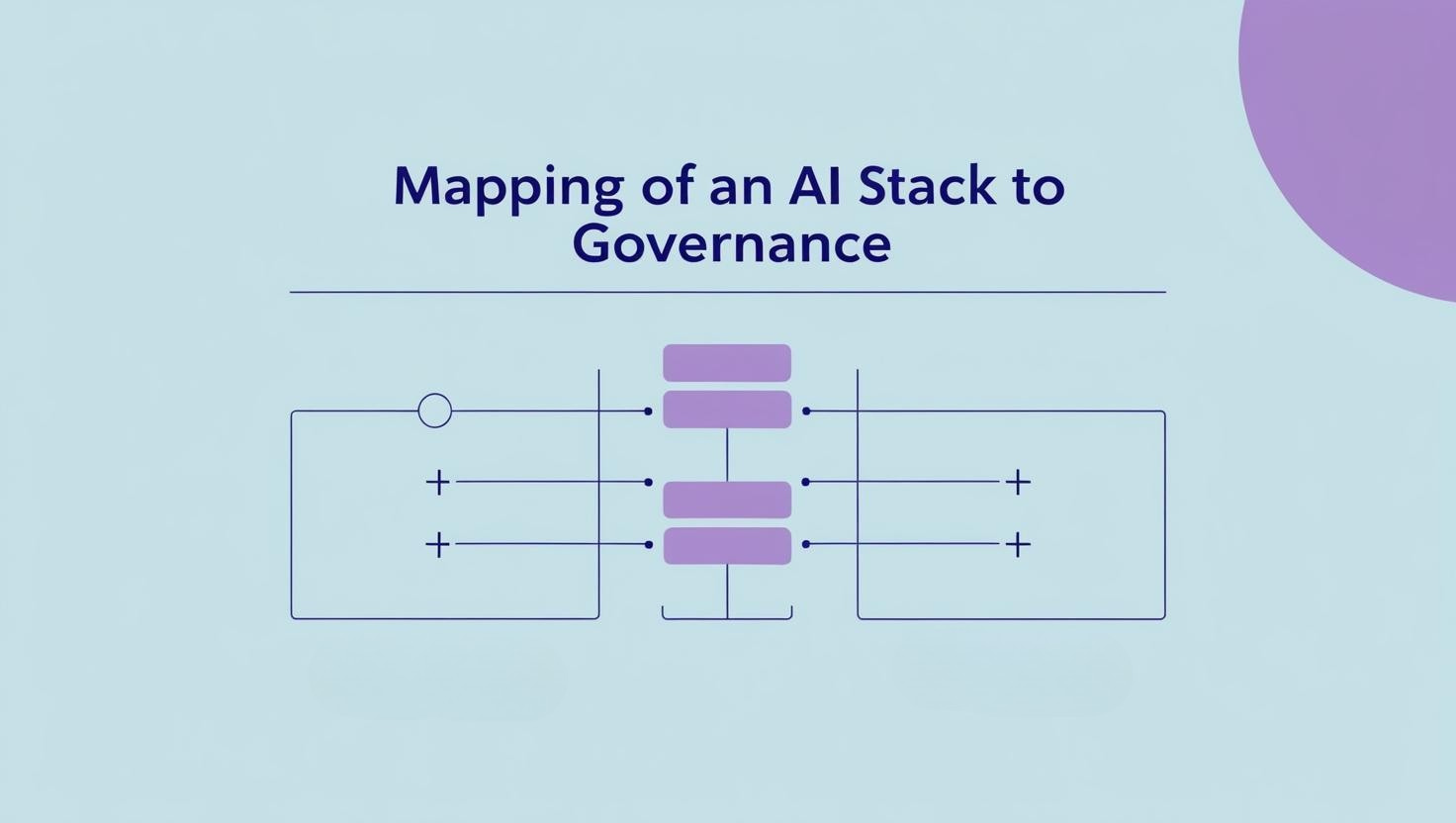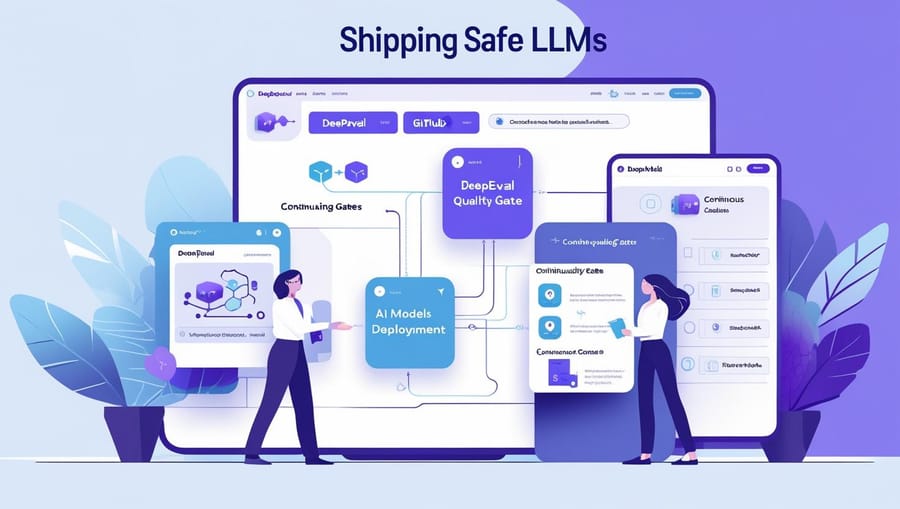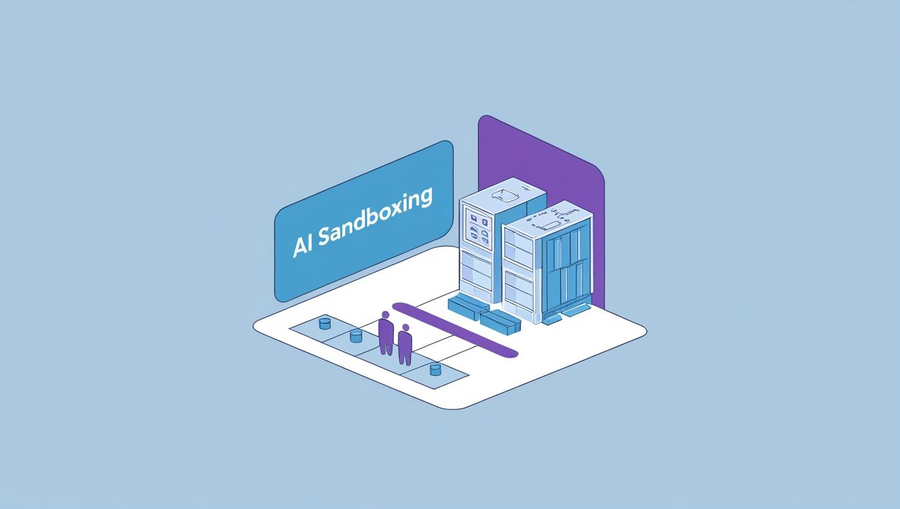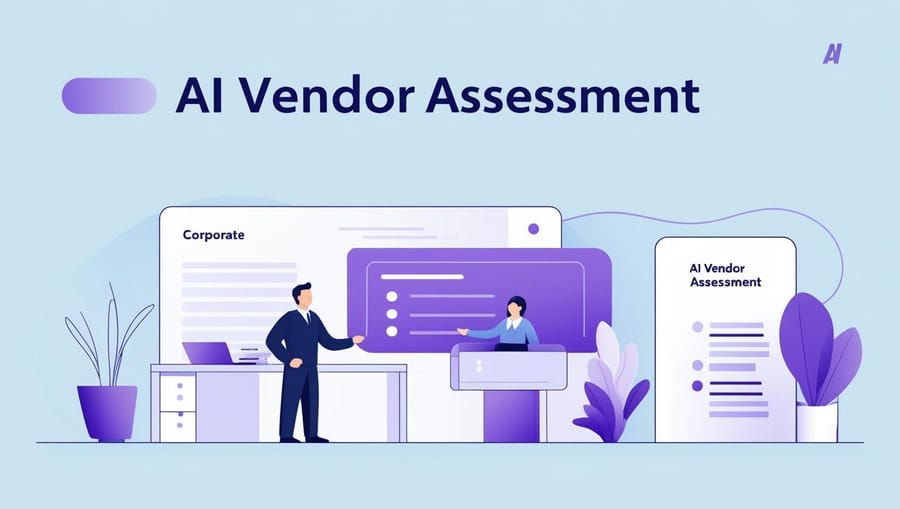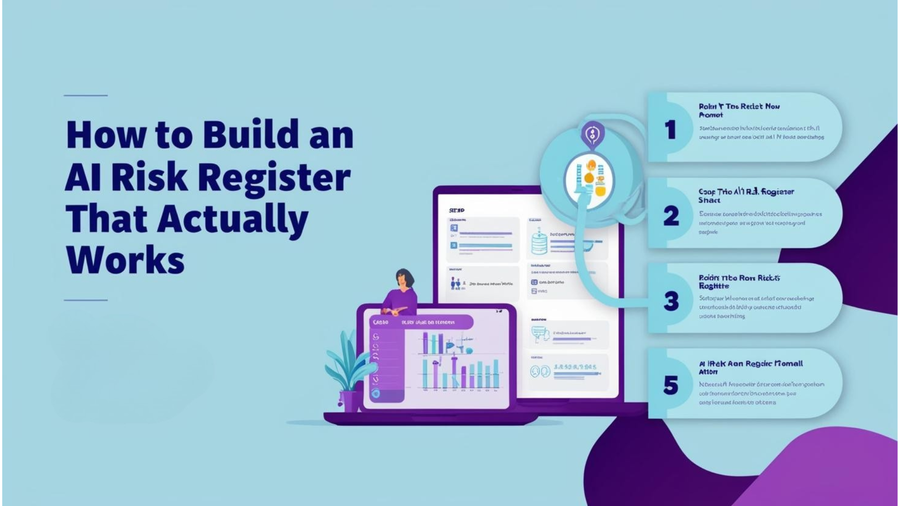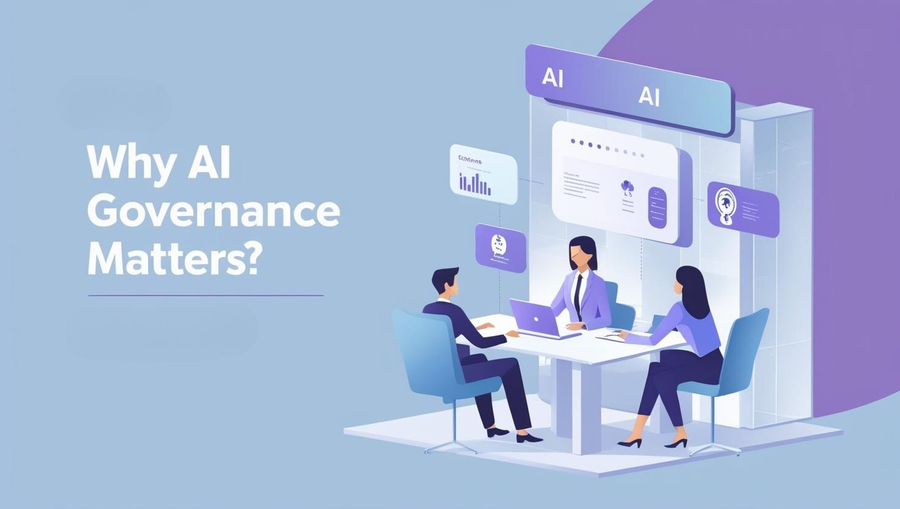AI is rewiring entire industries—but without governance, it can also derail deals, funding rounds, and user trust.
Regulations like the EU AI Act and frameworks such as the NIST AI RMF now require startups to show exactly how data flows through their AI stack. Yet many founders struggle to connect technical architecture with governance requirements.
This guide shows you how to map each layer of your AI stack to clear governance controls—fast, practical, and startup‑friendly.
1. Why Map Your AI Stack?
- Turns vague compliance questions into concrete action items.
- Buyers and investors love visuals that prove you know your data paths.
- Surfaces blind spots—especially third‑party services or "shadow AI."
Key takeaway: A simple diagram plus one‑page register beats a forty‑page policy no one reads.
2. Define Your Stack Layers
| Layer | Typical Components | Governance Focus |
|---|---|---|
| Data Sources | Databases, APIs, public datasets | Privacy, provenance, retention |
| Ingestion & ETL | Airbyte, Fivetran, custom scripts | Encryption in transit, access logs |
| Feature Store / Vector DB | Pinecone, Redis, Snowflake | Data segregation, lineage |
| Model Training | PyTorch, TensorFlow, Hugging Face | Bias testing, reproducibility |
| Model Hosting / Serving | AWS SageMaker, Vertex AI, custom Docker | Version control, rollback plan |
| Inference Layer / APIs | FastAPI, LangChain, OpenAI API | Rate limiting, third‑party risk |
| Application / UI | Web app, mobile app, chatbot | Explainability, user consent |
| Monitoring & Logging | Prometheus, Grafana, Datadog | Drift detection, incident response |
3. Map Controls to Each Layer
- Data Sources → Data Register – Dataset, owner, location, legal basis, retention.
- ETL → Access Controls – IAM roles, export logs, TLS 1.2+.
- Feature Store → Lineage Tags – Trace inputs to outputs (NIST "Map").
- Model Training → Bias & Fairness Checks – Record metrics every run.
- Serving → Version & Rollback Policy – Semantic versioning, auto‑rollback at 2 % error spike.
- Inference APIs → Third‑Party Register – Vendor, region, data residency, review date.
- Application Layer → Explainability Widget – SHAP/LIME or natural‑language explanation.
- Monitoring → Incident Response Playbook – Pager duty, time‑to‑ack, public disclosure plan.
4. Scenario Mapping: Predictive, Generative (RAG), and Agentic AI
| Scenario | Typical Stack Twist | Must‑Have Governance Control | Real Startup Example |
| Predictive (e.g., churn forecasting) | Frequent retraining, tabular data pipelines | Drift monitoring and roll‑back trigger | HR‑tech startup performs weekly accuracy tests; rollback if F1 drops 3 %. |
| Generative (RAG) | Vector DB + LLM API + retrieval layer | Content safety filter + citation logging | Legal‑tech firm logs every retrieved chunk and stores conversation IDs for audit. |
| Agentic AI (autonomous workflows) | Orchestration agents calling multiple tools | Human‑in‑the‑loop approvals for high‑risk actions | FinTech bot cannot move funds > $1 k without manual sign‑off captured in audit trail. |
Policy Docs to Include
Generative RAG → "Output Moderation & IP Policy"
Agentic AI → "Autonomy & Escalation Policy" outlining when an agent must defer to a human.
5. Where Startups Go Wrong
- One‑Size‑Fits‑All Policies – Generic docs with no link to architecture.
- Ignoring Third‑Party Risks – External APIs left off vendor register.
- Drift Blindness – No monitoring beyond launch; model performance quietly degrades.
- Explainability Afterthought – Dashboards added only when procurement asks, causing delays.
- No Incident Playbook – Team improvises during outages, increasing downtime.
Fix: Generate tailored policies with the AI Policy Assistant, map them to stack layers, and publish everything in a TrustCenter before your next demo.
6. Real‑World Example: FinTech Lending App
- Problem: Bank partner demanded bias testing evidence.
- Solution: Startup mapped data lineage, training metrics, and a rollback policy in one diagram; shared via TrustCenter.
- Outcome: Procurement cycle cut from 90 days to 30.
7. Tools to Speed This Up
- AI Policy Assistant – auto‑drafts Bias & Fairness, Output Moderation, Autonomy policies.
- TrustCenter – one‑click publish of your stack diagram, registers, and policies.
- Drift Monitor (open source) – weekly accuracy checks with Slack alerts.
8. Steps You Can Finish This Week
- Sketch your stack layers (15 min).
- Build Data & Third‑Party AI Registers (30 min each).
- Draft policies with AI Policy Assistant (45 min).
- Upload diagram and docs to TrustCenter (30 min).
Total time: ≈ 2 hours — buyers see you take governance seriously.
Key Takeaway
Governance mapping is not red tape; it is a sales accelerator. By connecting each stack layer—predictive, generative, or agentic—to clear controls and concise policy evidence, you answer procurement questions before they arise and keep your team focused on shipping.
Need a head start?
The CognitiveView AI Governance Starter Pack runs the self‑assessment, generates policies via AI Policy Assistant, and hosts your TrustCenter all in one afternoon.

